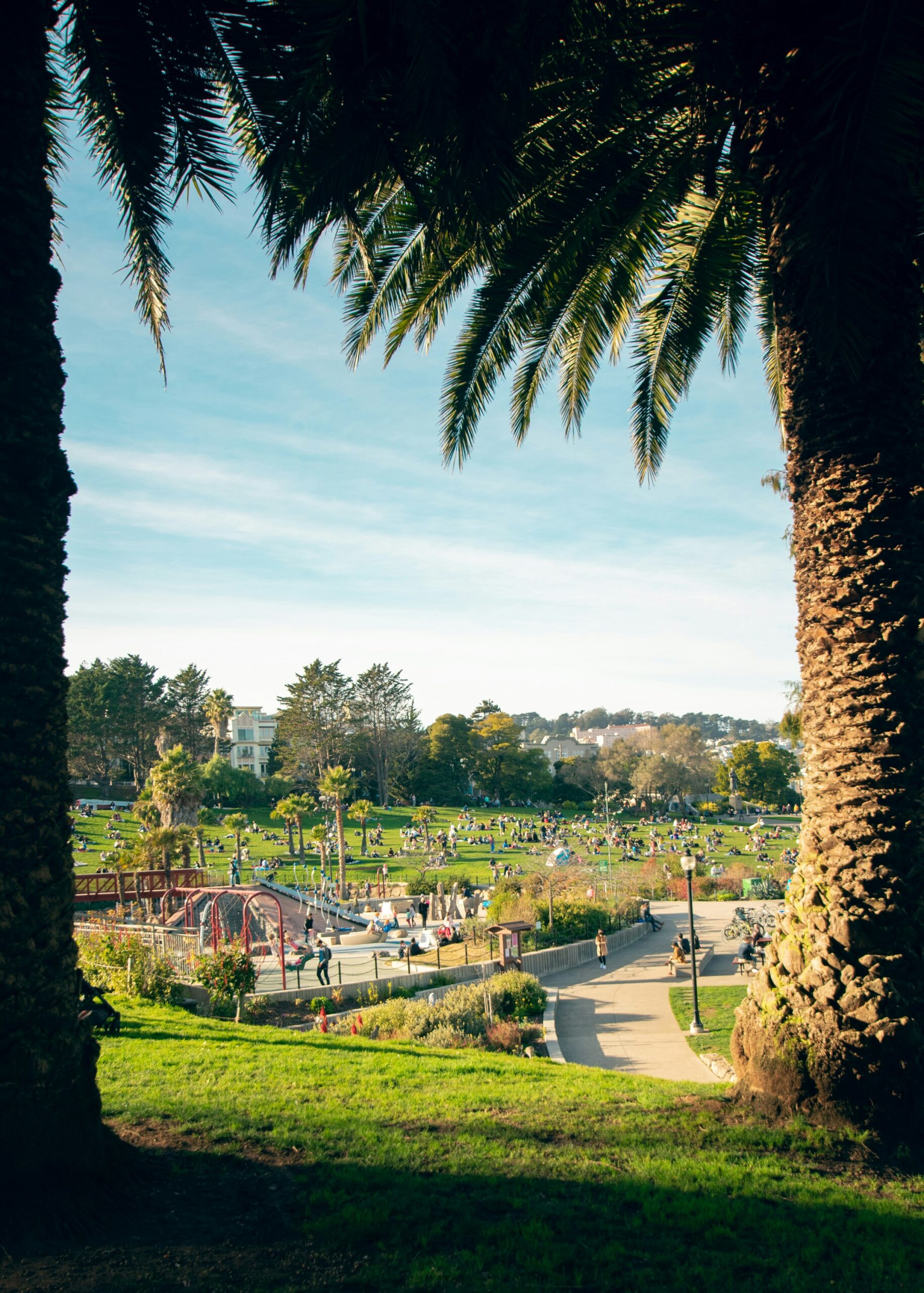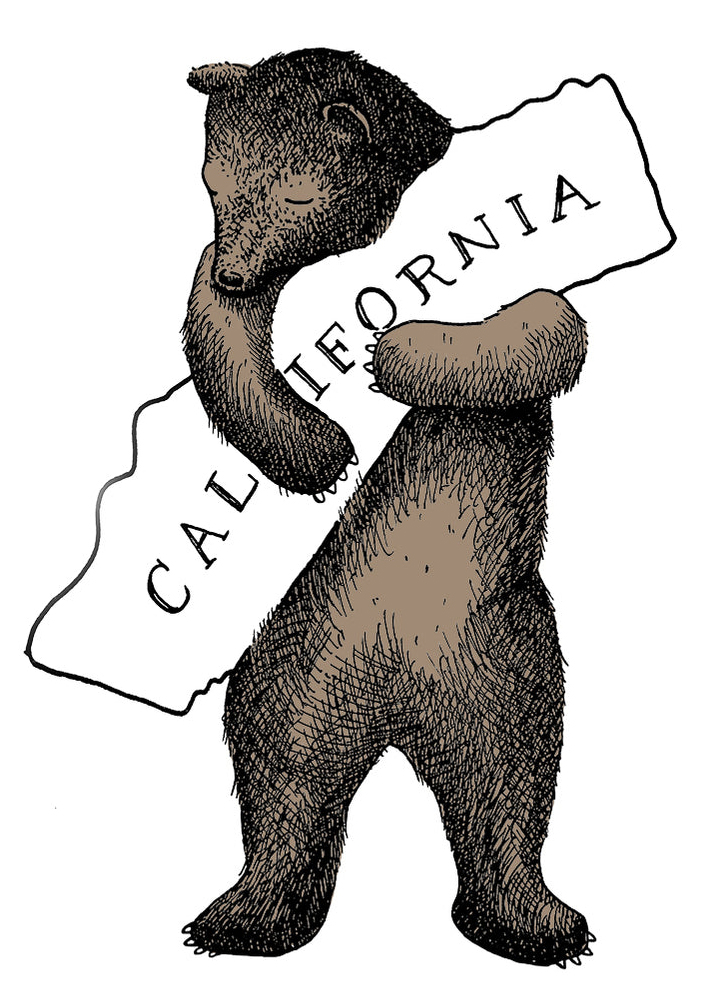Most Walkable Cities in California: Top 10 Pedestrian-Friendly Urban Centers
California offers countless charming cities, but some stand out for their exceptional walkability. Whether you're a resident looking to ditch your car or a visitor wanting to explore on foot, knowing which cities prioritize pedestrian-friendly infrastructure can enhance your experience.
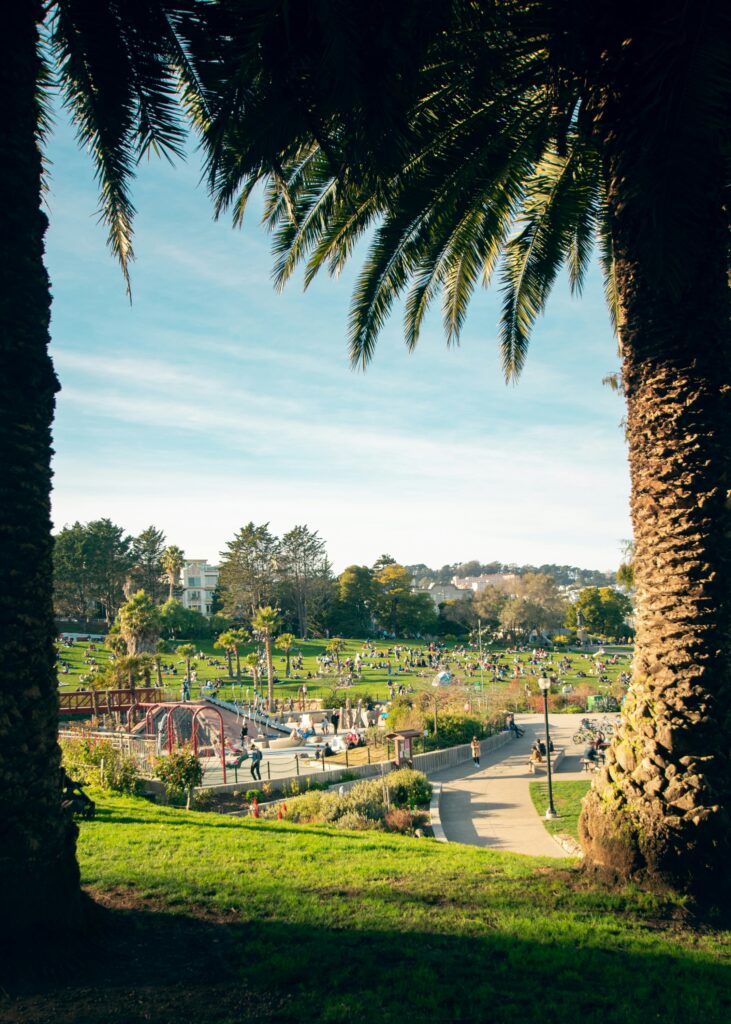
West Hollywood, San Francisco, and Hermosa Beach rank as California's most walkable cities, making them ideal destinations for those who prefer to explore on foot. These cities feature well-designed neighborhoods with easy access to restaurants, shops, parks, and entertainment venues all within walking distance.
Silver Lake showcases California's artistic spirit with walkable streets connecting independent boutiques, casual eateries, and green spaces like Silver Lake Meadow. The pedestrian-friendly layout of these cities reduces car dependency while promoting a healthier, more sustainable lifestyle.
Most Walkable Cities in California: Top 10 Pedestrian-Friendly Urban Centers
Benefits of Walkable Cities
Living in walkable cities creates measurable improvements in personal health, reduces environmental impact, boosts local economies, and strengthens community bonds. These advantages directly impact both individual residents and the broader urban ecosystem.
Health and Well-being
Regular walking in pedestrian-friendly cities helps residents maintain healthy body weight and reduces the risk of cardiovascular disease by up to 30%. Daily physical activity through walking improves mental health by decreasing stress and anxiety levels.
Walking cities encourage more active lifestyles, with residents typically getting 15-45 minutes more exercise per day compared to car-dependent areas. This natural increase in movement helps prevent type 2 diabetes and improves joint health.
Improved air quality in walkable areas leads to fewer respiratory issues. Studies show residents in walkable neighborhoods experience 40% fewer asthma attacks compared to those in car-heavy districts.
Environmental Advantages
Walkable cities reduce carbon emissions significantly as fewer people rely on personal vehicles. Each person who switches from driving to walking for short trips prevents approximately 300 pounds of carbon dioxide emissions annually.
Air pollution levels drop measurably in pedestrian-focused areas. Vehicle emissions decrease by up to 40% in zones designed for walking rather than driving.
Enhanced urban planning in walkable cities often includes more green spaces and trees. These areas absorb carbon dioxide, provide shade, and help manage stormwater runoff.
Economic Benefits
Local businesses thrive in walkable areas, with retail shops seeing up to 80% more foot traffic compared to drive-only locations. Property values in highly walkable neighborhoods typically increase 15-30% more than car-dependent areas.
Residents save substantial money on transportation costs. The average household in a walkable neighborhood spends $2,000-4,000 less annually on vehicle expenses.
Cities benefit from reduced infrastructure maintenance costs. Pedestrian infrastructure costs significantly less to maintain than roads and parking facilities.
Social and Community Impact
Walkable neighborhoods foster stronger social connections as people naturally interact more while walking. Face-to-face encounters increase by 50% in pedestrian-friendly areas.
Crime rates decrease in well-designed walkable areas due to more eyes on the street and increased community engagement. Statistics show a 15-25% reduction in reported crimes.
Children develop independence and social skills more effectively in walkable neighborhoods. They can safely travel to school and activities without relying on adults for transportation.

Criteria for Walkability
Cities earn walkability ratings based on specific measurable factors that promote pedestrian movement and enhance quality of life in urban areas. These ratings consider infrastructure quality, distance to amenities, street connectivity, and public safety measures.
Infrastructure and Design
Wide, well-maintained sidewalks form the foundation of walkable cities. These pathways must be smooth, obstacle-free, and compliant with ADA standards.
Street design features like curb cuts, crosswalks, and traffic signals make pedestrian movement safer and more efficient. Buffer zones between sidewalks and vehicle traffic provide additional protection.
Public spaces and urban plazas enhance walkability, offering rest areas and social gathering spots. These spaces often include benches, shade trees, and water fountains.
Accessibility and Connectivity
Walk Score ratings measure the proximity of essential amenities within walking distance. Key destinations include:
- Grocery stores and markets
- Restaurants and cafes
- Schools and libraries
- Parks and recreation areas
- Public transportation hubs
Grid-style street patterns maximize route options and reduce walking distances. Short blocks with frequent intersections give pedestrians multiple path choices.
Mixed-use development places residential areas near commercial zones, reducing the need for vehicles.
Safety and Comfort
Adequate street lighting improves visibility and security during evening hours. Regular police patrols and active neighborhood watch programs deter crime.
Weather protection features like awnings and covered walkways encourage year-round walking. Tree canopies provide shade and reduce urban heat island effects.
Traffic calming measures such as speed bumps and narrowed streets help control vehicle speeds. Clear signage and road markings alert drivers to pedestrian zones.
Urban Planning and Policy
Zoning laws that prioritize pedestrian-friendly development shape walkable communities. Height limits and setback requirements create human-scale environments.
Cities implement parking policies that discourage excessive car use. These include reduced parking requirements and higher fees in walkable districts.
Complete Streets policies ensure new development projects accommodate all transportation modes. These standards require dedicated space for pedestrians, cyclists, and transit users.
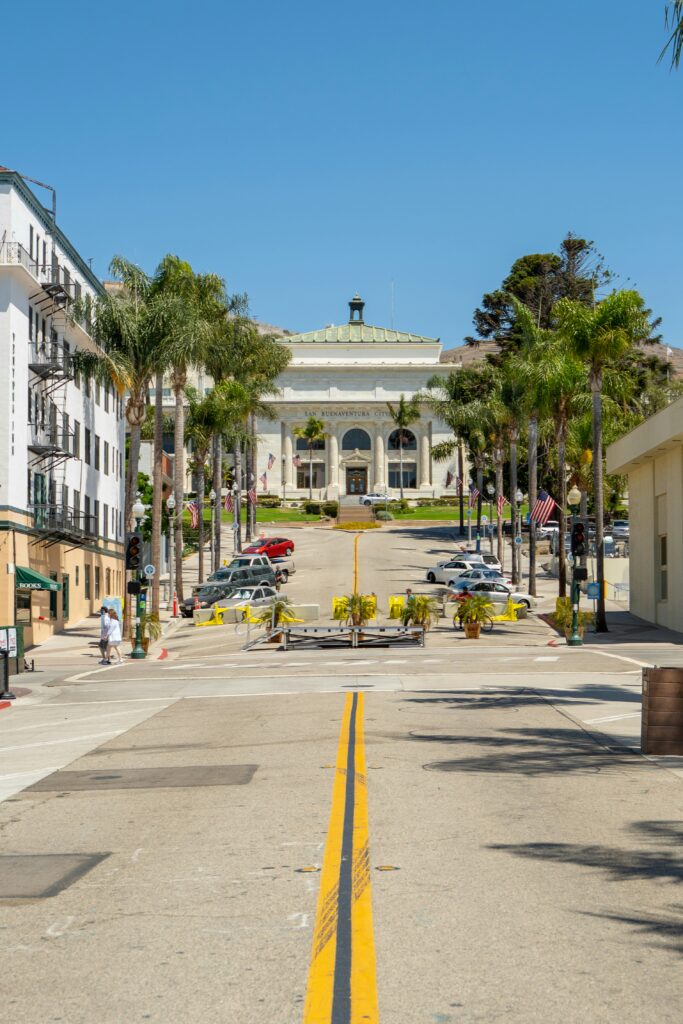
Top Walkable Cities in California
California's most walkable cities offer residents and visitors abundant pedestrian-friendly streets, accessible public transit, and concentrated amenities within walking distance. Each city provides unique characteristics that make exploring on foot both practical and enjoyable.
San Francisco
San Francisco ranks as the second most walkable city in California. The city's compact layout and comprehensive public transportation system make car-free living feasible.
The densely packed neighborhoods feature distinctive character and charm. North Beach offers Italian restaurants and cafes, while Chinatown presents authentic Asian markets and dim sum spots.
The city's hills provide challenging but rewarding walks with stunning bay views. Popular walking routes include the Embarcadero waterfront promenade and Golden Gate Bridge.
Numerous parks and public spaces dot the urban landscape. Golden Gate Park spans 1,017 acres with museums, gardens, and lakes accessible by foot.
Oakland
Oakland combines urban amenities with walkable neighborhood centers. The revitalized downtown area features wide sidewalks and pedestrian plazas.
Lake Merritt, a 3.4-mile walking path, encircles the city's central lake. The path connects multiple neighborhoods and provides exercise opportunities for residents.
The Temescal district showcases independent shops and restaurants along Telegraph Avenue. Grand Lake and Rockridge neighborhoods maintain their walkable, small-town feel with local businesses and farmers markets.
Los Angeles
While known for car culture, Los Angeles contains several highly walkable districts. Downtown LA offers concentrated entertainment, dining, and cultural attractions.
The Metro system connects walkable neighborhoods like Hollywood, Silver Lake, and Los Feliz. These areas feature pedestrian-friendly streets lined with shops and cafes.
Koreatown ranks among LA's most walkable neighborhoods with dense housing, markets, and restaurants within easy walking distance.
Santa Monica
This beach city emphasizes pedestrian access with wide sidewalks and dedicated walking paths. The famous Third Street Promenade draws visitors with three car-free blocks of shopping and dining.
The 26-mile beach path accommodates walkers and cyclists. Montana Avenue features boutique shopping and cafes in a walkable setting.
Santa Monica‘s grid layout makes navigation simple. The city provides pedestrian-friendly connections to nearby Venice Beach and Pacific Palisades.
Long Beach
Long Beach's compact downtown core centers on Pine Avenue's restaurants and entertainment. The waterfront path connects major attractions like the Aquarium of the Pacific and Shoreline Village.
Belmont Shore's Second Street corridor offers boutiques and dining options in a walkable setting. The neighborhood's narrow streets and small lots create an intimate pedestrian environment.
The East Village Arts District features galleries, coffee shops, and independent businesses within walking distance of downtown. Regular art walks encourage exploration of the neighborhood on foot.
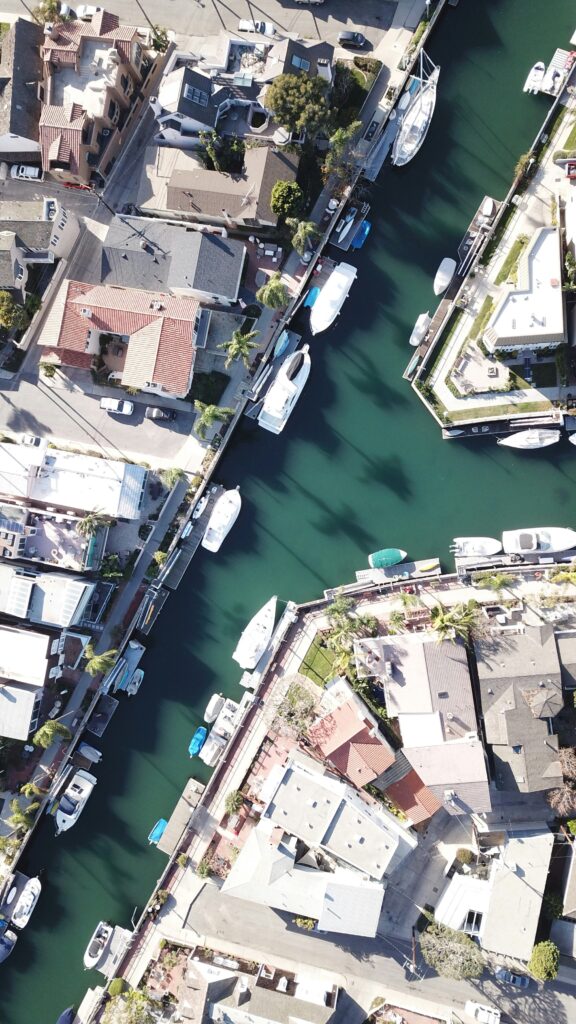
Evaluating Walk Score
Walk Score measures neighborhood walkability based on proximity to amenities and pedestrian-friendliness metrics. This rating system helps people find walkable places to live by analyzing specific data points and urban features.
Understanding the Metrics
Walk Score analyzes thousands of walking routes to nearby amenities on a scale from 0-100. Population density and walking routes factor heavily into the final score calculation.
Places receive points based on the distance to amenities in categories like grocery stores, restaurants, shopping, and public transit. The closer the amenities, the more points awarded.
Maximum points go to locations within a 5-minute walk. No points are awarded for amenities more than 30 minutes away by foot.
Limitations of Walk Score
The scoring system doesn't account for factors like sidewalk quality, street lighting, or pedestrian safety features. Hills, weather conditions, and crime rates also don't factor into the calculations.
Some amenities may be technically within walking distance but separated by highways or other pedestrian barriers. The score can't distinguish between safe and unsafe walking routes.
Rural and suburban areas often receive lower scores due to spread-out amenities, even if they have excellent walking infrastructure.
Local knowledge remains essential since the numerical score alone doesn't tell the complete story of an area's actual walkability.
Improving Walkability
Cities can transform their walkability through strategic planning, resident participation, and thoughtful infrastructure development. Strong policies and community engagement create pedestrian-friendly environments that boost health, safety, and local economies.
Local Government Strategies
Municipal governments must prioritize pedestrian infrastructure in their transportation plans. Implementing complete streets policies ensures roads accommodate all users, not just vehicles.
Cities need dedicated funding for sidewalk maintenance and expansion. Regular safety audits help identify areas needing improved crosswalks, traffic signals, and lighting.
Zoning reforms encourage mixed-use development and higher density near transit stops. These changes naturally increase foot traffic and support local businesses.
Local officials should adopt Vision Zero programs to eliminate pedestrian fatalities through data-driven safety improvements and speed management.
Community Initiatives
Neighborhood walking groups organize regular outings that build social connections while promoting active lifestyles. These groups often identify safety issues and advocate for improvements.
Walk audits conducted by residents help document broken sidewalks, missing crosswalks, and other barriers to walking. This data guides infrastructure priorities.
Citizens can create walking maps highlighting safe routes to schools, parks, and shopping areas. Digital tools enable real-time updates about construction zones or hazards.
Urban Development Projects
Developers must incorporate wide sidewalks, street trees, and benches in new projects. These amenities make walking more comfortable and appealing.
Transit-oriented development locates housing and businesses near public transportation. This design reduces car dependency and encourages walking.
Creating car-free zones in downtown areas provides safe spaces for pedestrians. Adding public plazas and pocket parks gives walkers destinations and rest spots.
Wayfinding systems with clear signage help pedestrians navigate efficiently between key locations. Digital kiosks can provide real-time transit information and walking directions.

Walkable Neighborhoods
California's walkable neighborhoods enhance quality of life through thoughtful urban design and accessible amenities. These areas promote healthier lifestyles and stronger community connections.
Characteristics of Walkable Neighborhoods
Walkable neighborhoods feature wide, well-maintained sidewalks and shorter blocks that create easy navigation paths. Mixed-use zoning allows residential and commercial spaces to coexist seamlessly.
Safe street crossings, traffic calming measures, and dedicated bike lanes make these areas pedestrian-friendly. Trees and benches provide shade and rest spots.
Little Italy in San Diego exemplifies these elements with its vibrant streets lined with shops, restaurants, and weekly farmers markets.
Case Studies of Successful Neighborhoods
West Hollywood boasts a walk score of 91, making it one of California's most pedestrian-friendly areas. Its compact design places entertainment venues, dining options, and retail within easy walking distance.
Berkeley's downtown district demonstrates successful walkability through its:
- Dense concentration of restaurants and shops
- Proximity to public transit
- Connected street grid pattern
- Active street-level businesses
The Culver City neighborhood near Media Park showcases modern urban planning with pedestrian plazas and mixed-use developments that encourage foot traffic.

Public Transportation Integration
California's most walkable cities seamlessly connect pedestrian infrastructure with robust public transit networks, creating convenient mobility options for residents and visitors alike.
Role in Enhancing Walkability
San Francisco's integrated transit system ranks among America's best, with BART stations strategically placed near pedestrian-heavy zones. This placement reduces the need for cars and encourages walking between destinations.
Transit hubs act as natural gathering points, spurring the development of walkable retail and dining districts in their vicinity. Many pre-car California cities have preserved their pedestrian-friendly layouts while modernizing their transit connections.
Well-designed bus stops and rail stations include clear signage, weather protection, and safe crossing points. These features make the transition between walking and public transport smooth and intuitive.
Examples of Effective Systems
Berkeley's AC Transit connects walkable commercial districts with residential neighborhoods through frequent bus service. The system includes dedicated bus lanes and priority signals to ensure reliable service.
Santa Monica's Big Blue Bus network complements its pedestrian-friendly coastal charm. The system features real-time arrival information and bike racks, supporting multi-modal transportation.
San Diego's trolley system links popular walking destinations like Little Italy and the Gaslamp Quarter. Stations include bike storage, wide sidewalks, and clear pedestrian paths to nearby attractions.
The Future of Walkable Cities
Smart city technologies and progressive urban policies are transforming California's walkable neighborhoods into connected, sustainable communities that prioritize pedestrian mobility and enhanced quality of life.
Technological Advances
AI-powered traffic signals now adapt in real-time to pedestrian patterns, reducing wait times at crosswalks by up to 40%. Digital wayfinding kiosks provide interactive maps, transit schedules, and safety alerts to pedestrians.
Smart street lighting systems automatically brighten when people are present and dim when paths are empty, improving safety while reducing energy usage. Mobile apps now guide residents to the most walkable routes while tracking air quality and noise levels.
3D urban modeling tools help city planners visualize and optimize pedestrian infrastructure before construction begins. Connected sensors monitor foot traffic patterns to identify areas needing wider sidewalks or additional crossings.
Policy and Urban Planning Trends
Cities are implementing 15-minute neighborhood designs where essential services lie within a short walk. West Hollywood and San Francisco lead this transformation with strict car-free zones and expanded pedestrian areas.
New zoning laws mandate ground-floor retail, wider sidewalks, and public spaces in residential developments. Parking minimums are being replaced with maximums to discourage car dependency.
Investment in pedestrian infrastructure has doubled since 2020, funding projects like elevated walkways, pedestrian bridges, and car-free market streets. Cities offer tax incentives to businesses that locate in walkable districts.
Mixed-use development requirements ensure new construction supports walkable communities with integrated residential, commercial, and recreational spaces.
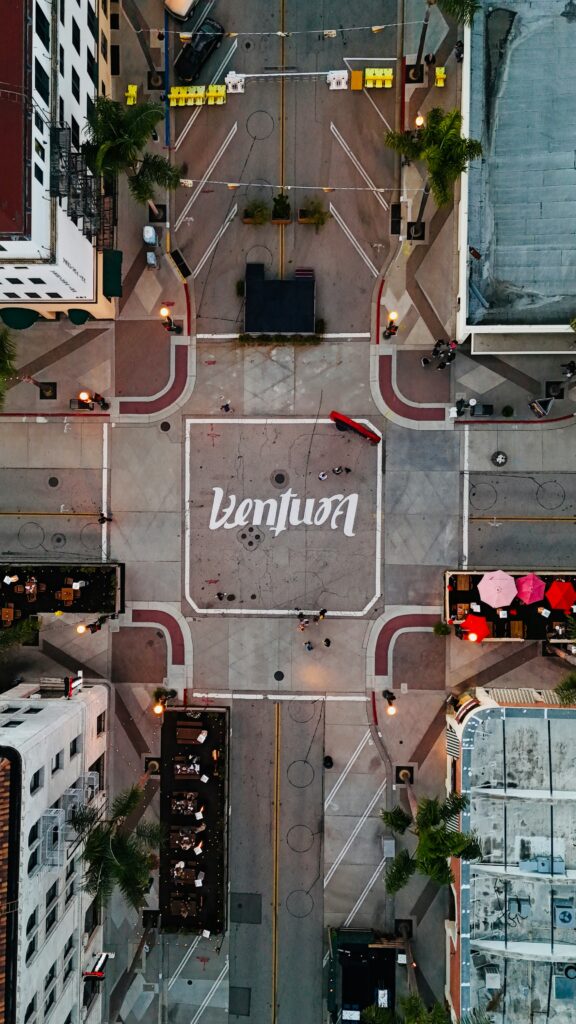
Challenges and Solutions
Creating walkable cities in California requires addressing infrastructure gaps and population shifts while maintaining existing pedestrian-friendly features.
Dealing with Barriers
Many California cities face zoning restrictions that prevent the development of dense, walkable neighborhoods. Outdated regulations often mandate excessive parking requirements and low-density development.
Successful cities are implementing form-based codes to encourage mixed-use development and pedestrian-oriented design. These new regulations prioritize street-level retail and wider sidewalks.
Cities like San Francisco have introduced parklets and pedestrian plazas to reclaim street space for walkers. Traffic calming measures and protected crosswalks have made busy intersections safer for pedestrians.
Adapting to Changing Demographics
Urban areas like Little Italy in San Diego demonstrate how neighborhoods can evolve to serve diverse populations while maintaining walkability. Weekly farmers' markets and street festivals help create community connections.
Cities are adding benches, shade structures, and better lighting to accommodate aging residents who rely on walking for transportation and exercise.
Multi-lingual wayfinding signs and cultural districts help new residents navigate neighborhoods on foot. Improved crosswalk timing and curb cuts make streets more accessible for families with strollers and residents with mobility challenges.
The Role of Citizens in Walkability
Active citizen engagement shapes walkable communities through organizing, advocating for pedestrian infrastructure, and participating in urban planning processes. Residents hold significant power to transform their neighborhoods into more pedestrian-friendly spaces.
Grassroots Movements
Local walking groups and neighborhood associations drive meaningful change by conducting walking audits to identify safety issues and accessibility barriers. These citizen-led efforts often result in improved crosswalks, wider sidewalks, and better street lighting.
West Hollywood demonstrates the impact of engaged citizens, where resident advocacy led to the creation of pedestrian plazas and car-free zones.
Key Actions by Citizens:
- Organizing community walks
- Documenting infrastructure problems
- Presenting findings to city councils
- Building coalitions with local businesses
Public Participation in Urban Design
Citizens provide essential local knowledge during planning meetings and design workshops. Their input helps identify crucial walking routes, desired amenities, and safety concerns that might otherwise be overlooked by planners.
Little Italy in San Diego showcases successful public participation, where residents helped shape the neighborhood's walkable character with wider sidewalks and weekly farmers' markets.
Effective citizen participation includes:
- Attending planning commission meetings
- Submitting design feedback
- Participating in neighborhood surveys
- Supporting local walkability initiatives through voting

